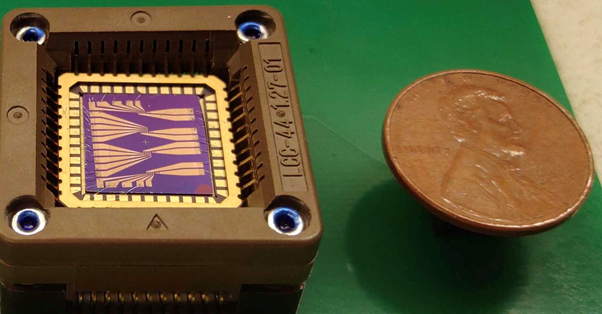AZoNano speaks with Professor Kenneth Burch from Boston College. The Burch Group has been investigating how wastewater-based epidemiology (WBE) could be used as a tool for real-time information on the consumption of illicit drugs.
Can you give an insight into the work that is carried out by the Burch Group at LASE?
Our group is interested in understanding the connections between different properties of materials and using that knowledge to create new devices and platforms. We focus on “Quantum Materials” compounds where the responses have no classical anologue. This includes both bulk and “2D Atomic Crystals” where individual sheets can be peeled off and placed atop one another. The group employs different optical techniques to study the lattice, magnetic, optical, thermal, electronic and quantum properties. In addition, we have developed a clean room in a glovebox to perform all the fabrication in inert atmosphere faster, and without the need to “gown up”. This allows us to rapidly prototype new devices without using a conventional cleanroom.

Figure 1. Schematic illustration of an on-site chip-based rapid detection platform for near real-time monitoring of opioid metabolites in wastewater using AptG-FET sensor technology. Step 1, wastewater collection, filtration, and dilution (as needed); step 2, on-chip sample (10 μL) incubation; step 3, characterization of the sensor to estimate the concentration of targeted drug metabolites.
Can you give us an overview of your recent research?
In the past few years the group has focused on materials where the electrons behave like particles of light. This includes systems like graphene and bulk “Weyl semimetals” where the electrons have a handedness (or chirality, like DNA). In the latter, we focused on their remarkable transport properties, resulting from a cooperative behavior between the electrons and the lattice. We have also studied the nonlinear optical responses of Weyl semimetals as these probe the quantum geometry, or how the wavefunction evolves with momentum and energy. In the case of graphene we have focused on its very sensitive ability to detect neighboring charge, while being very robust to organic environments. Thus we developed the Graphene Electronic Multiplexed Sensors (GEMS) platform.
How does the device detect opioid byproducts?
The device uses aptamers, specifically coded DNA strands that will only attach to a specific protein target. These are easily attached to the graphene using a linker molecule. We then place different aptamers in different wells of the device. Lastly, we measure the resistance on the graphene as a function of an external (gate voltage). This gate tunes the charge on the graphene, which usually has a perfect balance of positive and negative charges.
Upon adding/removing charge, the resistance drops, by sweeping the gate we measure the voltage at which the resistance peaks, and thus the amount of charge on the graphene. By monitoring the shift in this voltage, we can detect when the opioid metabolites are attached to the aptamers, as they induce additional charges. The change in voltage is directly related to the concentration. This is a key advantage of graphene. It can easily attach to the biological probes without causing damage to the device. The peak in resistance versus voltage provides a natural marker for determining the amount of charge (or target) in the sample.
The device is the first to use graphene-based field effect transistors to detect four different synthetic and natural opioids simultaneously while shielding them from harsh elements of wastewater. Did the team encounter any difficulties when carrying out the research?
A key challenge was finding the right fabrication procedures and design to protect the graphene from the wastewater without sacrificing sensitivity. The aptamers, blocking molecules and passivation of the device all combined to make this possible.

The device used by the Boston College team to carry out the research. Image Credit: Boston College
You have mentioned, “Its sensitivity and portability would allow for wastewater-based epidemiology at the local scale – as specific as block-by-block or dorm-by-dorm – while ensuring privacy.” What demographic data could wastewater-based epidemiology (WBE) help to provide?
In principle, WBE can be used to measure the concentration of biological analytes in a population. It can then be coordinated with other metrics of that population. For example, by measuring opioid use in a neighborhood and correlating that with other demographics that are already known about the area being studied. In addition, this can be done in “real time”, i.e., once per day, to evaluate trends.
Avni Argun, co-leader of the project, has stated, “Wastewater testing is an emerging strategy that can defeat limitations and stigma associated with individual drug testing, and it provides a more objective measure of drug use at neighborhood level.” What information could the device provide for public health officials trying to determine the level of opioid usage and the impact of community-wide treatment interventions?
Since the device can be used to measure the wastewater in real time (for example, once per day) and on a local level, it can help track the utility of interventions, helping in the placement of ambulances or other health interventions that deal with the consequences of overdose.
The device can provide nearly real-time monitoring in multiple locations. How could this help in terms of distributing resources such as first responders?
By placing them in areas with higher usage, one can reduce the response time for overdose calls.
What are the future plans for the implementation of the device?
We are working to scale up and incorporate other necessary components for ease of use.
What’s next for the Burch Group?
The group is exploring other uses of the GEMS platform in point-of-need detection.
Where can readers find more information?
More information can be found on our website.
About Kenneth Burch

Kenneth Burch is a Professor of Physics at Boston College, where, since 2014, he has been running the Laboratory for Assembly and Spectroscopy of Emergence (LASE). Before arriving at BC, he was an assistant professor at the University of Toronto for 5 years. He is a former Director’s fellow at Los Alamos National Laboratory where he performed ultrafast spectroscopy with Antionette Taylor and Rick Averitt. Before this he was a graduate student with D. Basov studying the optical properties of magnetic materials at UCSD.
He has made seminal contributions to the development of novel techniques to understand and exploit quantum materials. This includes developing cutting-edge biosensors based on graphene, colossal bulk photovoltaic effects in Weyl semimetals, novel superconducting states and emergent modes for topological quantum computing, and various new particles with Raman scattering.
His group has developed a cleanroom in a glovebox where all fabrication and heterostructure preparation is performed. He has received a number of awards for his work, including the Lee Osheroff Richardson Prize and the APS GMAG best dissertation award. The work also resulted in publications in high-impact journals including, Nature, Advanced Materials, Nano Letters, ACS Nano, PRX, Biosensors and Biolectronics, multiple patents and is supported by NIH, NSF, DOE, ONR, AFOSR, ARO, GRIP molecular and GINER Inc.
Figure 1. sourced from:
Rapid, Multianalyte Detection of Opioid Metabolites in Wastewater
Narendra Kumar, Muhit Rana, Michael Geiwitz, Niazul Islam Khan, Matthew Catalano, Juan C. Ortiz-Marquez, Hikari Kitadai, Andrew Weber, Badawi Dweik, Xi Ling, Tim van Opijnen, Avni A. Argun, and Kenneth S. Burch
ACS Nano Article ASAP
DOI: 10.1021/acsnano.1c07094
Disclaimer: The views expressed here are those of the interviewee and do not necessarily represent the views of AZoM.com Limited (T/A) AZoNetwork, the owner and operator of this website. This disclaimer forms part of the Terms and Conditions of use of this website.